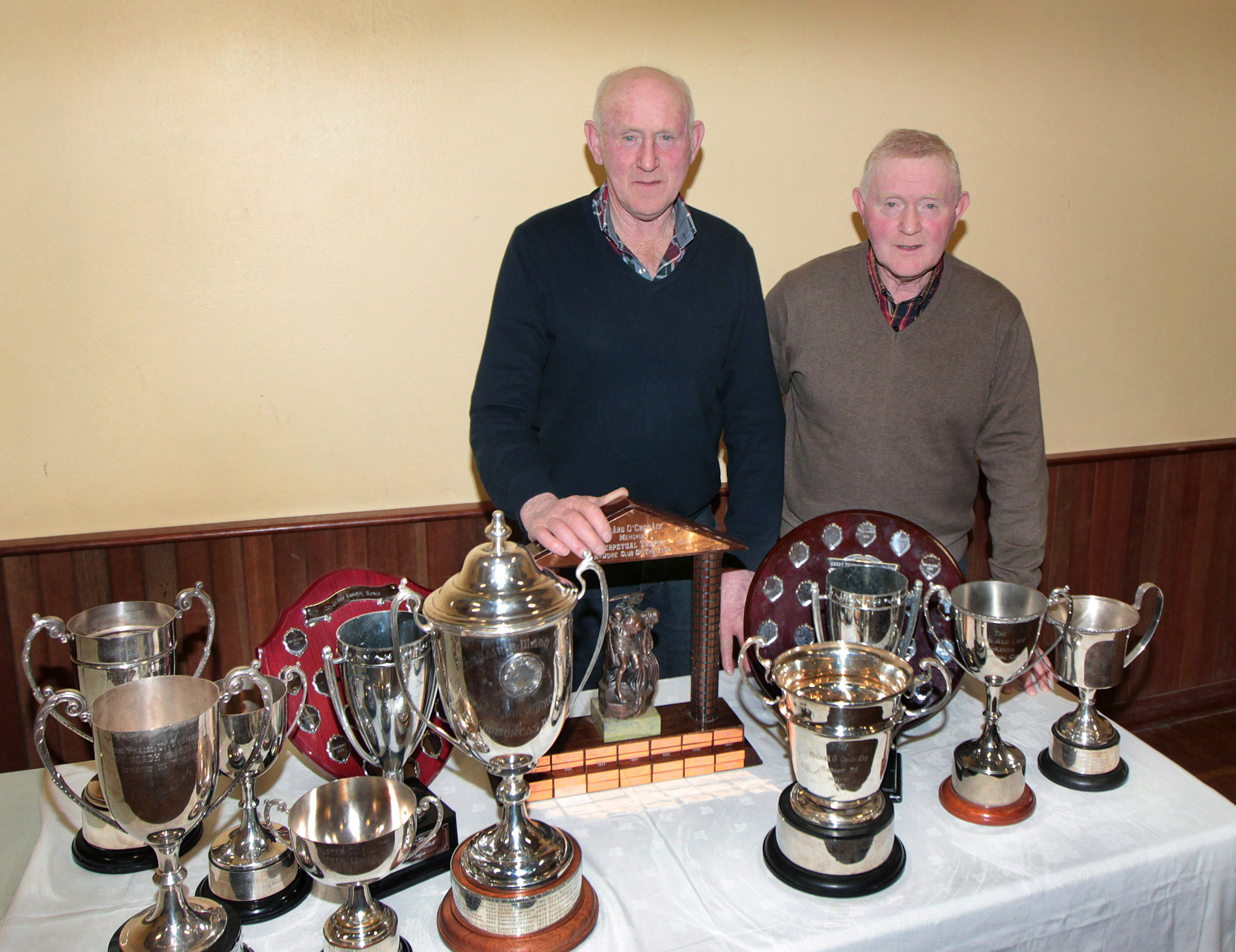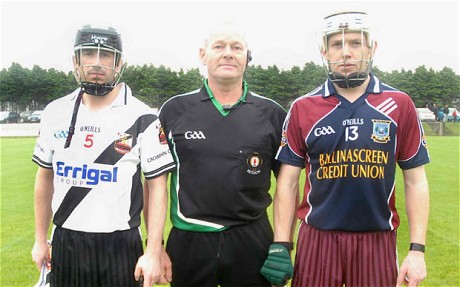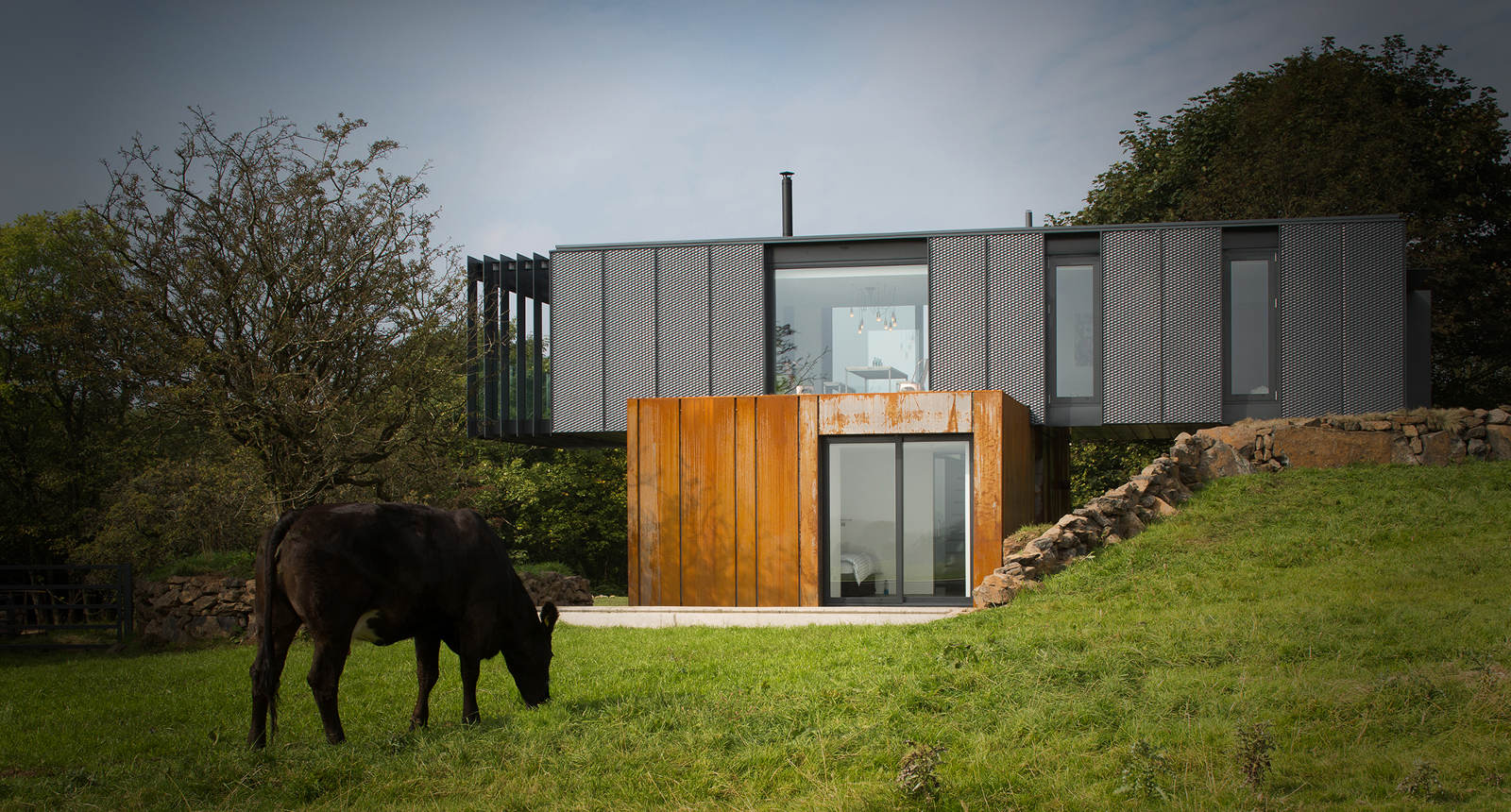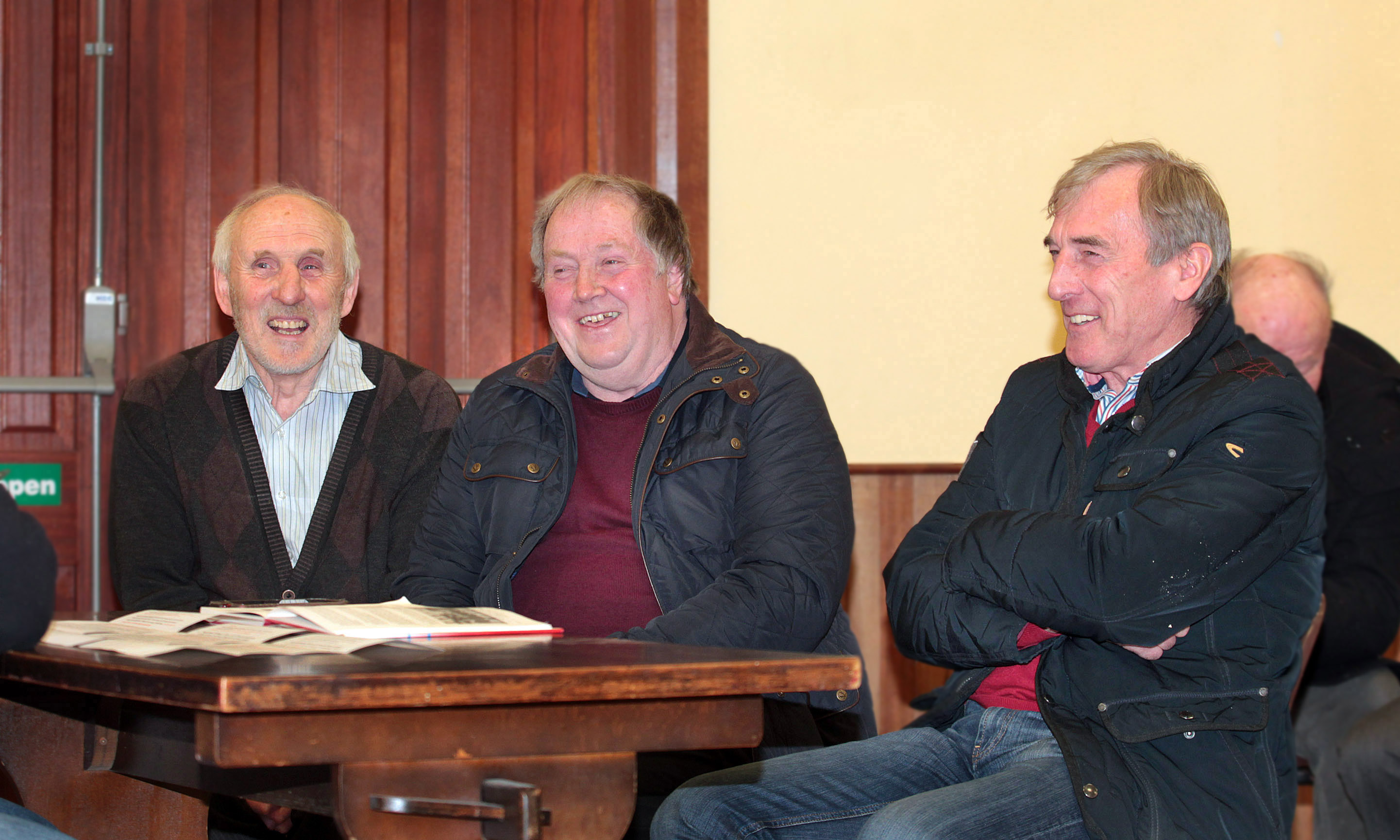What else is there to write about Slaughtneil? With a list of honours as long as the smooth brow of Carntogher, we’ll try this. It’s something different at least.
This is a story that deserves to be written, and if written sufficiently well, needs to be read, and its lessons learned. It’s time to look deeper and farther than the here and now. This is about a snapshot in time captured on the page of a book – an event which sent ripples through future generations. It’s about a group of men who suffered loss, on and off the field, but came back stronger, always.
When the Robert Emmets club produced a history book in 1989, it ran to 168 pages. Two of these (34 & 35) were dedicated to their most successful senior championship journey to date – the men of 1969 – and the club’s first county senior football final. “The head says Bellaghy but the heart says Slaughtneil” read the headline in the Mid Ulster Observer’s county final preview. And on that occasion, the head proved to be correct, but the heart continued to beat robustly.
*****
14 September, 1969 – Slaughtneil, having qualified for their first senior football championship final, are leading nine-time champions, Bellaghy by 0-06 to 0-04. We don’t know what was said at half time, and nor should we. What we do know is that beside right half back (RHB), Willie Hampson, sat the team’s full forward (FF), Bernard Kearney. Both would go on to become chairmen of their club as would Kevin Kelly (RFF), Mickey Bradley (MF/LHF) and Neicy Mulholland (CHB). Surrounding them were future club secretaries, presidents, treasurers and many more who are still active club members generations later.
A Peter Doherty goal for Bellaghy in the second half would deny the Emmet’s their first John McLaughlin Cup, something they would have to wait another thirty-five years to achieve. However, it galvanised friends and teammates for life.
*****
“The man was something else.”
Coming from John Joe Kearney, that’s high praise indeed.
A high-fielding athletic midfielder, Mickey Bradley has created a dilemma in the mind of Kearney. Who was the best? Mickey or his son, Patsy? The mere fact that there is a discussion shows that the apple doesn’t fall far from the tree.
“Up until recently I would have said that over the course of an hour’s football, that man [Mickey] would have caught more balls than Patsy, but in recent times Patsy has been slowly changing my mind. Actually, he has changed it,” Kearney says.
“Mickey wasn’t heavily built but it didn’t matter who he was up against. He saw the ball and up he went, and generally came back down with it. He was one the best fielders we ever had.”

Margaret McLaughlin
Kick-outs and catches recalled still dominate the men’s conversation years later. The love for the art of high fielding is clear to see.
Francis McEldowney was goalkeeper on the ’69 team and would later become club secretary, and also a referee; remarkably at the same time. Up against a hotly fancied Ballerin team in the semi-final, the goalkeeper’s brother, Paddy produced the performance of his life, nullifying Peter Stevenson and securing safe passage to the decider.
In the analysis of both games, if Mickey Bradley or Paddy McEldowney didn’t catch Francis’ kick-outs, then their captain, Denis Cassidy usually wasn’t far away. It was an era when defenders also chipped in with a helping hand on the restarts and few did it finer than Laurence Bradley (LFB). With his son, Paul, currently the fulcrum of the Slaughtneil attack at the other end of the pitch from where his father plied his trade, Laurence beamed with pride to see his boy go one better in 2004. And just two years later, tragedy and sudden death on 13 June 2006 took Laurence from his family and community.
“He was as staunch a GAA man as ever was in the club,” remarked current chairman, Sean McGuigan, at the mention of the left back of 1969.
In the years that followed, and when McEldowney gave up the number one jersey, it didn’t take long to find a replacement.
“He had a serious kick-out. The only thing about it was that if you were playing midfield, and you went up to catch it, it was still going like a bullet. Generally, it would have went through your hands, or if not you’d have needed to have been around centre half forward to catch it.”
John Joe Kearney is talking about the man who would later replace McEldowney in goals – Martin Mulholland.

Events at a hurling championship quarter-final between Kevin Lynch’s and Ballinascreen at Swatragh on Friday 12 August 2011 brought a club, county and community to a standstill. Having played in most positions during his youth, Mulholland later kept goals for the club. Like many of his peers, he became a referee and was regarded as one of the fittest men of his generation.
“Martin was a fitness fanatic,” says John Joe Kearney. “He was fit to do press-ups with one hand and when we were training in the winter, he’d expect the rest of us to be able to do it too. I was cursing him under my breath and then he might have progressed to doing the press ups on his thumb. He prided himself on being super fit. He was a big loss.”
“Martin had lifelong involvement with our Association and left us while serving the GAA acting as a referee during a championship match,” said the then GAA President, Christy Cooney.
Not for the first time, or the last, a people were stunned.

Slaughtneil GAA
If you look at the old photo, there’s Kevin Kelly, kneeling far right. He’s not the biggest man on the team but neither is his son, Padrig – a half forward on today’s squad. Both are men of example; words are not thrown away easily or used cheaply. Each one has a purpose, and if you listen closely enough to Kevin Kelly’s responses, you might just gain some insight into their makeup.
Padrig has been playing well all year: “He’s still there anyway.”
You must be very proud of him: “Well, we’d be proud of all the players.”
And if you still need convincing:
What do you put the remarkable dual success down to? “Common sense and cooperation.”
Hurling has been a large part of the success story of Slaughtneil in recent times, just as it was in 1969 when the club also won the county hurling championship with final victory over Lavey. The game had a remarkably quick uptake in the Carn area.
“Denis Cassidy returned from the All-Ireland in 1968 with a hurl,” explains Kevin Kelly. “We copied it, sawed down ash trees and cut them into shape, 26 times. We won the county title the following year.”
“Barney Doherty put a lot into hurling here and played a long time too,” says Willie Hampson.
His son, Dermot, recently stepped into a role his father occupied for some years, being a central figure in the Slaughtneil senior hurling management.
“Dermot was good at both codes,” states John Joe, getting the agreement of his teammate, Willie Hampson: “He was a big cog for us in 2004”.
Barney Doherty’s daughter, Claire, would go on to play senior camogie for her club and to captain her county. One family, three codes.

SLAUGHTNEIL DISCO. Two words which will spark memories of youth for many. Go on, indulge yourself for a few minutes in the nostalgia of the era. Recall the carousel of hormone-fuelled teenagers that went around for a short lifetime. There may not have been a pub, a chapel or a shop, but for twenty-three years there was a disco. Yet, there nearly wasn’t.
According to Willie Hampson, when ‘young Henry Cassidy’ first mooted the idea at a club convention, it was shot down. However, a few sleeps later and some reflection brought new thinking. The plan had just required some fine-tuning.
“Myself and Francis McEldowney (secretary at the time) discussed it and he thought that if we were going to run it, we should put on buses. So we went back to the meeting on the Monday night and that’s what we did.”
The sight of cavalcades of blue and white Ulsterbuses on the Tirkane, Gortinure and Ranaghan roads soon became a reality, providing the club with a steady stream of income. This was in the days, of course, before James Bradley’s (LHB) son brought Kevin McCloud and the Grand Designs team to the area.
“They came from Kilrea, Portglenone and Bellaghy, over the mountain from Dungiven, and all round. It really was a great success,” says Hampson. The key, of course, was feet on the ground:
“It was an unbelievable voluntary effort. We had a rota, but on any week you would have had 25 or 30 men here giving their time on a Friday night. It was a big effort. We stewarded the buses and all that. I don’t think many clubs could have pulled it off,” he says proudly.
Willie Hampson is there too: front row, centre – central in the photograph and central to a lot of the efforts of the club in the years following the final of ’69.
It’s remarkable to think that Hampson will have managed every one of the Slaughtneil players that will emerge from the spongy floor of the tunnel under the Hogan Stand on St Patrick’s Day at some stage in their career. Involved mainly at u16 level but also involved with three county minor titles, the man who would also serve as club treasurer for seventeen years was renowned for his ability to communicate and instil confidence in young players.

As current joint-PRO, Michael McMullan recalls: “…there’s only a few points in it and (looking around the huddle) not one of you boys has even broke sweat yet…” was a dynamic changing quote from a half time team talk by Hampson, who would also help inspire the generation of Derry minors in 1989 to clinch the county’s fourth Tom Markham cup.
On Willie’s right-hand-side kneels Patrick Kelly, along with Kevin, one of the team’s four sets of brothers.
“Patrick always knew where to be on the field,” says his brother. “He never seemed to have to jump for a ball. He caught it in a basket; here (extends arms).” A tenacious yet composed corner back, Patrick Kelly is a current president of the club.
“I always said Patrick’s next replacement was Francis McEldowney (father of the other current joint-PRO, Catherine). He was the same type of player in that he always knew where to be,” says John Joe Kearney.
Skipping two places to the end of the row to Neicy Mulholland, we find another direct link to current times with current secretary Seamus, his son. “A great player at all ages, he could have played anywhere,” says Kevin Kelly. The Mulholland’s would serve club and county with great distinction – Neicy’s brother Patsy holding the post of Derry county secretary for over two decades.
Between Neicy and Patrick are Denis Cassidy and Bernard Kearney, uncle and nephew. Both are now sadly passed.
A veteran of the team in ’69, Cassidy was a giant of club and county having played in the All-Ireland Junior final of 1955 versus the Rebels from Cork. 1969 would have been the crowning glory of a glittering career but it just wasn’t to be. His internment for weeks before the final didn’t help either, but such were the times and the circumstances the group lived through.
Uncle of the Kearney brothers, Cassidy knew how to look after his own. His nephew, Bernard, would return the favour in later life, seeing to his uncle’s every need towards the end.
“Bernard started out in goals and then moved outfield,” says Willie Hampson. The sitting club chairman at the time of his death on 24 June 2014, many current players have publicly remarked on how the eldest brother’s passing shook the club to its core, before uniting it like never before. Even in death, Bernard Kearney seemingly contributed to his club, just like he had for the previous 50 years. One of the most respected men in Derry GAA, gentleman Bernard also had a tough edge when needed, as Hampson recalls:
“I remember us going to play a friendly in Swatragh and things just didn’t go to plan. Tommy Gunning refereed it. He gave a fourteen-yard free. I vividly remember coming back onto the line and Bernard saying ‘right boys, the friendly’s over’. I still laugh to myself about that.”
“I think you left out a word there,” quips John Joe Kearney.
Hampson’s recollections of Bernard Kearney are those of a team-mate and also a fellow club officer. They both started out running the finances of the club in the early to mid-eighties. Hampson and Kearney, along with John Joe Convery helped put in place funding efforts that resulted in a new hall for the community in 1984. They upgraded the pitch and built the club facilities from the ground up.
“Then we put a big emphasis on underage hurling and football,” says Hampson.
Indeed they did.

Margaret McLaughlin
THE YEARS AFTER 1969 still exercise John Joe Kearney. For the club’s sake, that’s probably a good thing. Most things with John Joe come back to what is relevant to today – those lessons learned are still being put to good use. He is clearly energised from his involvement in Mickey Moran’s management team, and is always thinking.
“If we had been up against a lesser team than that Bellaghy team, we probably would have won. At that time there was maybe a five-year period from ’67 through where we should have won at least one championship. It just didn’t happen.
“Nowadays we have a big squad but back then there just weren’t as many players available. We were never far away. If championship matches could have been played as carnival matches, we’d probably have won a lot more. We were unbeatable in carnival football at that time and had a fairly good team.”
“After ’69 we were still able to hold our own in senior team but for whatever reason we seemed to have a phobia about championship football. Things just didn’t seem to go for us on the day in the years after that up until that crop of minors who won the St Paul’s tournament in 1999. That formed the basis of the current team with a few younger lads thrown in who are maybe only eighteen years of age. That’s made the difference this year I think – a bigger squad.”
Two members of that St Paul’s winning team spring to mind in the wider analysis of the development of the current team. Both had fathers on the ’69 team: Niall Convery (son of Peter) was captain of the team, whilst Kevin O’Neill (son of Larry) was awarded player of the tournament. Very few slip through the net but some do. There are reasons, though, as John Joe explains:
“Niall was a very good footballer. He was plagued with a back injury. By trade he was a brickie so it didn’t gel too well if he had to go out to his work on a Monday and lift blocks having got hurt on a Sunday. Niall would have still been playing if he had been able to stick at it and would have been very useful to us today.”
Even in the final of 1969 itself the team was under pressure due to injuries. There are also echoes of the current situation with Christopher ‘Sammy’ Bradley.
Shan McEldowney was in the form of his life, playing in every match that year, before a back injury between the semi-final and final forced him to miss out. It was a big loss according to John Joe Kearney, also revealing that Neicy Mulholland has played through the pain of a staved thumb against Bellaghy. A former treasurer and club referee, Shan’s twin sons, Fergal and Francis (Slaughtneil captain) are of course an iconic part of the current football squad. We dare to dream of another line to finish that paragraph.
Winner of All-Ireland minor and under-21 medals with Derry in 1965 and 1968, Kearney left St Columb’s College the year before they won the county’s first MacRory Cup title. Eamon Small schooled and played on the Buncrana road too, and at only twenty-two years of age was part of the Slaughtneil management in 1969 (whilst also playing for neighbours, Glen). Seán Murphy, a teacher in St Pat’s Maghera, partnered him, bringing new found organisation and a fresh approach.
With the team’s co-manager only twenty-two years of age, the youngest player was one of the three Kearney brothers, Michael. Pressure on numbers meant players were drafted at an earlier age, something that is very topical at present:
“Most of the boys around Slaughtneil at that time started to play senior football around 16,” explains John Joe.
“Mickey was 15 or 16 at the time so didn’t feature too much in ‘69. I remember the following year we were playing Bellaghy down in Bellaghy and he got a bad dead leg. I always thought that it affected him badly throughout the rest of his career because he seemed to carry that. You would have noticed memories of that incident in his play, but having said that, he was as good as player as ever came out of our house. He was tricky as a forward and good with both feet. He probably didn’t play long enough.”
On the modern situation, Kearney is reflective given his brother’s experience and those of others down the years.
“There’s two ways of looking at it. Colleges’ football has got a lot more prominent than it was a way back in the 60’s, so you have a problem with lads putting in serious training for the MacRory Cup and that. They can be picked up and then playing with county minors but if they belong to a club who haven’t big numbers, it’s going to be difficult for the club. It’s a bit of a mixed bag. Having said all that, I suppose they need to be protected at that age.”
“They play so much nowadays and it’s not only football. You have hurling too with the dual clubs, so when they talk about burnout there is a certain amount of truth in that. They start now at seven or eight and play a lot, particularly from twelve onwards. By the time they get to their mid-20’s a lot of boys have had enough, so there is a case for trying to protect them a bit.”

Margaret McLaughlin
Sons of the men of ’69 may provide the core of the club’s current senior teams but grandchildren are also starting to emerge. Phelim Diamond’s and Brian Cassidy’s descendants populate football, hurling and camogie underage teams still. There’s Brian, second from the end in the back row. Smiling and arms strongly folded. Beside him stands Harry Dougan – a hard-as-nails character and a member of successful Derry junior teams in the early 60’s, Harry went to Canada in the middle of the decade, travelling alongside the team’s commanding full back, Peter Convery, who still looks like he could give Brendan Rogers or Chrissy McKaigue a run for their money.
Harry’s place in the old photograph came about more by life’s run of events as much as anything else.
Kevin Kelly explains: “In 1969 Harry came home because the mother was ill. She died in August and he stayed until the football was over. He wouldn’t really have been a regular for long before that campaign.”
Harry’s story is unique among the group.
When asked to share their experiences of the years since their county final defeat, sixteen men answered the call.
When the meeting was postponed and rescheduled due to a funeral in Cork, sixteen men again answered the call, and with only a few days’ notice. With the exception of Harry and James Doherty (based in Derry City), all still live a stone’s throw from where they played.
They line up in the same formation as forty-six years ago. Gaps are left.
A few agree to tell their story. The rest listen attentively to every word.
No one leaves.

Enlarge

Margaret McLaughlin


[…] Read full article here << […]
A story well told. Takes me back to some of my earliest memories of football. i remember being at the ’69 final together with my late father. We travelled there with the late John Devlin and his son “Big Liam” who went on to score two goals for the ‘bridge in the ’89 final. We won the 70 final too by the way! I played one of my first senior games against a lot of these men in ’75. You didn’t get much change in the shadow of Carntogher! When I came out the other end of my playing days John Joe Kearney was still going! He must have been near 60!! Lol A fine player!